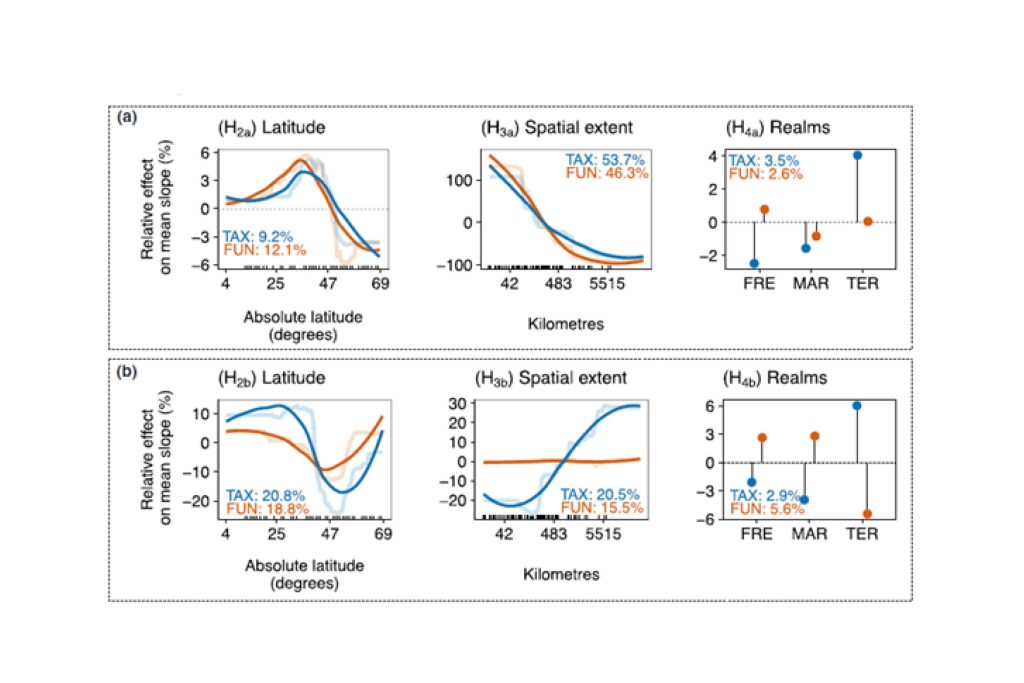Prof. Arkadiusz Nowak uczestniczył w wieloautorskim zespole badawczym, którego celem było ustalenie dynamiki zmian beta-różnorodności w wybranych zbiorowiskach roślin i zwierząt. Ustalono, że spadek różnicy bogactwa taksonomicznego był silniejszy niż spadek różnicy bogactwa funkcjonalnego zarówno wzdłuż gradientu geograficznego, jak i środowiskowego. Dynamika zmiany różnorodności taksonomicznej i funkcjonalnej była najszybsza w ekosystemach na średnich szerokościach geograficznych. Ekosystemy morskie miały najmniejszą dynamikę zmian. Dynamika zmian w bogactwie taksonomicznym jest przydatnym narzędziem do badań biogeograficznych, ponieważ odzwierciedla czynniki związane z dyspersją, a także reakcje gatunków na zmienne klimatyczne i środowiskowe. Zmiany w różnorodności funkcjonalnej mogą być efektywnym narzędziem do badania zmian zbiorowisk w heterogenicznych środowiskach.

Abstract
The aim of the research was to understand the variation in community composition and species abundances (i.e., β-diversity). A common approach to examine β-diversity is to evaluate directional variation in community composition by measuring the decay in the similarity among pairs of communities along spatial or environmental distance. We provide the first global synthesis of taxonomic and functional distance decay along spatial and environmental distance by analysing 148 datasets comprising different types of organisms and environments. We measured the strength of the decay using ranked Mantel tests (Mantel r) and the rate of distance decay as the slope of an exponential fit using generalized linear models. We used null models to test whether functional similarity decays faster or slower than expected given the taxonomic decay along the spatial and environmental distance. We also unveiled the factors driving the rate of decay across the datasets, including latitude, spatial extent, realm and organismal features. Taxonomic distance decay was stronger than functional distance decay along both spatial and environmental distance. Functional distance decay was random given the taxonomic distance decay. The rate of taxonomic and functional spatial distance decay was fastest in the datasets from mid-latitudes. Overall, datasets covering larger
spatial extents showed a lower rate of decay along spatial distance but a higher rate of decay along environmental distance. Marine ecosystems had the slowest rate of decay along environmental distances. In general, taxonomic distance decay is a useful tool for biogeographical research because it reflects dispersal-related factors in addition to species responses to climatic and environmental variables. Moreover, functional distance
decay might be a cost-effective option for investigating community changes in heterogeneous
environments.
Graco-Rosa C., Aarnio S., Abrego N., Acosta A.T.R., Alahuhta J., Altman J., Angiolini C.,…, Nowak A.,… Soininen J. 2021. Distance decay 2.0 – a global synthesis of taxonomic and functional turnover in ecological communities” Global Ecology and Biogeography 31: 1399–1421. 10.1111/geb.13513
